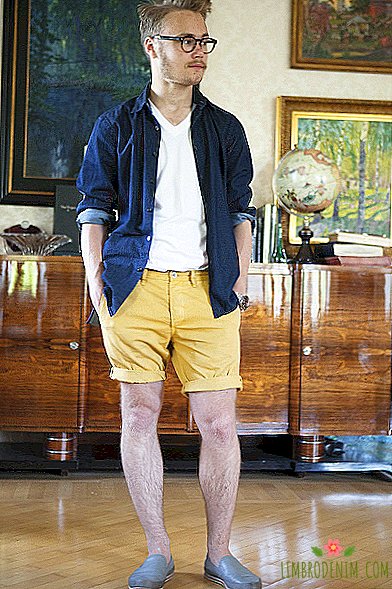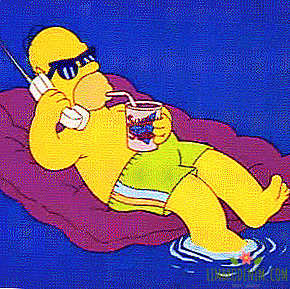+10 to charisma: How dark glasses become synonymous with coolness
In March Vanessa Brown's book "Cool Shades, the History and Meaning of Sunglasses" was published, which the author presented at the world's largest exhibition of glasses MIDO Eyewear Show in Milan, where more than a thousand manufacturers of glasses and frames participate. We talked with Vanessa, a senior lecturer at the Department of Design and Visual Culture at the University of Nottingham Trent, about the nature of the coolness of glasses, about how fashion for certain forms of frames arises, why glasses are a subject of seduction and what to think about those who do not remove glasses in a dark room.
Anonymity and impenetrability
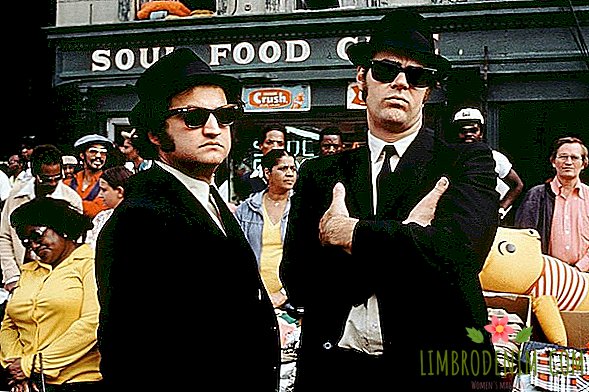
The idea to write a book about the relationship of coolness and sunglasses came to me after going to the store for milk. I was wearing shabby clothes with fresh traces of paint from repairs. The first thing I did when I got out of the car was putting on sunglasses. It was strange: it was overcast on the street, why do I need glasses? Because in them I look cooler. Hence the main question: why such a small object, like sunglasses, has such a tremendous power of transformation?
A modern understanding of coolness has shaped the urban environment. Remember the sociologist Robert Park: "the city is a state of mind", the city is a state of mind. In the city there is a need for anonymity, to be an observer, and if you participate in public life, then only with the right to leave the game at any moment. Baudelaire called the new type of person "flâneur" and described him as "in the center of the world and not seen by the world."
Some scientists believe that “coolness” is one of the most important values in the Western world. Stiffness is associated with equanimity and isolation. Sunglasses just perfectly cope with the request for these qualities. Points speak for you: "I am not disturbed by anything." For dark glasses you are safe, save yourself from the chaos of the outside world, avoid direct contact, but have the opportunity to spy on people. Dark glasses were preceded by masks at the ball. They also made it possible to preserve anonymity and made it possible to change the social role. Let it be for one evening. At the same time, although the mask and glasses protect you from people, they also attract attention to you.
New speeds of the 20th century

Racers, pilots, machinists - they were the first to make glasses a desirable "cool" accessory that corresponded to the spirit of the times. The Italian futurists of the beginning of the 20th century wrote: “The splendor of the world was enriched with new beauty - the beauty of speed”. Everyone wanted to move quickly and began to wear wind-proof glasses. In the course were round rims, as well as solid panoramic, reminiscent of modern sports models. The appearance of a sports uniform around the face of glasses is due to the fact that the railways showed the world in perspective and panorama. The form of protective speedy-glasses, even after decades has changed little.
The girls one of the first sports glasses captured by French photographer Jacques-Henri Lartigues. He shot his wife Bibi, who, being a famous fashionista, wore men's sport round glasses in the 1920s. Masculine sports glasses will be popular with women up to the 1950s, until heart glasses, cat glasses and other decorative options come into fashion. Interestingly, the formula "speed plus points" as the personification of coolness still works. Remember at least the scene on a motorcycle with Britney Spears from the clip "Toxic".
World of luxury and glamor
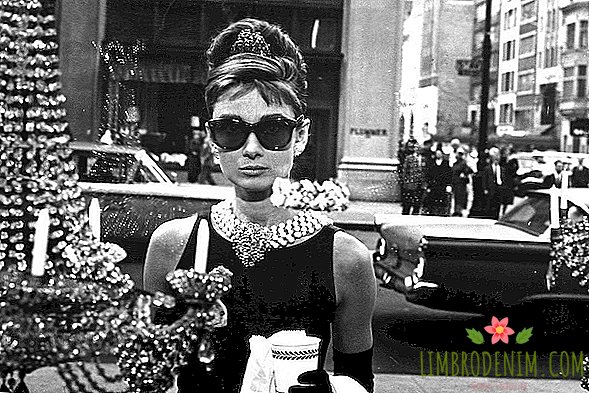
One of the first publications of sunglasses in fashion magazines was the shooting of American fashion photographer Louise Dahl-Wulf for Harper's Bazaar in 1938. The picture shows a girl who sits relaxed on the sun-drenched terrace. From this point on, sunglasses become a status thing, an attribute of the elite and a subject that personifies glamor and active leisure in the sun, like playing golf or going to the beach. Points at this time are selling in the same place as jewelry. Thus, the idea is born that possessing glasses allows you to imitate belonging to a privileged class. Remember the glasses with large logos of brands that are still popular.
Celebrities also added cool points. In Hollywood, glasses were worn because of the desire not so much to preserve anonymity as to protect the eyes from paparazzi flashes too blinding. The image of a star in dark glasses became steady. Jacqueline Kennedy deliberately went out without glasses - the only way she was taken for an ordinary girl.
Hipsters and political activism
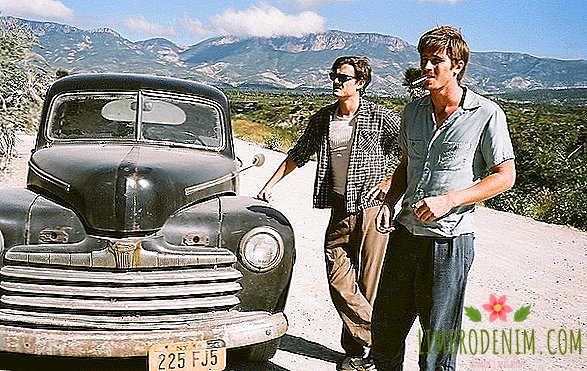
In the middle of the XX century dark glasses became a symbol of marginal coolness, belonging to the “other world”. They were worn by black jazz musicians in nightclubs and bars of the 1940s, and then the beatniks of the 1950s. Since then, if someone wears dark glasses in a dimly lit room, we read it as a message that a person distances himself from the outside world and goes into himself. Black is the color of self-centeredness and rationality.
In the middle of the XX century dark glasses became a symbol of confrontation and struggle for rights. A vivid example is the legend of jazz Miles Davis. On the cover of his album with the meaningful title "Birth of the Cool" in 1957, he is depicted in dark glasses. Miles wore dark glasses in bars during performances to avoid eye contact with racists. However, it was in the clubs that the mixing of different cultures and races began. As Francis Scott Fitzgerald wrote: "We walk in bars to be shoulder to shoulder with all kinds of people."
Members of the 1960s political movement Black Panthers wore dark glasses and posed for gun shots in their hands — everything to break the traditional picture with white “open” politicians. Instead of openness - marginality, paying attention to the shutdown of the African-American population from society. Points have become a symbol of militarism and coolness in the power circles of Afro-centrist groups, as well as a craving for changing status and fighting for it. Later, the ideas of status and struggle will take into circulation hip-hop musicians, wearing dark glasses.
Seduction and Voyeurism
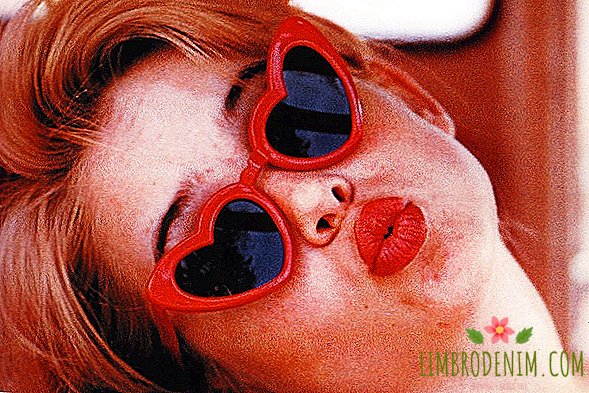
Remember the noir-cinema of the mid-XX century: its typical heroine is a girl in dark glasses. Take at least Barbara Stanwick in the "Double Insurance" of 1944, a vivid example of femme fatale. The image of a fatal beauty in dark glasses or a mask will excite the minds for more than a decade. On the one hand, closed eyes enhance the sexual objectification of the body. On the other hand, the girl in dark glasses adopts the male voyeuristic behavior of the observer. In the 60s, there was even a brand of glasses, which was called “Boywatcher”, which allows girls to “peep” through a thin hole in the outside world, including men.
The process of seduction always includes a game with a look. Hence the association of glasses with danger and sexuality: “You see something, then no. Maybe I will let you into my space, maybe not.” A vivid example is Stanley Kubrick’s Lolita. Important: in the book, Nabokov abstained from a detailed description of the heroine. Visualized and sexualized her image of the film Kubrick. There is a scene where Lolita looks at Humbert, raising his glasses, which indicates the fragility of the boundaries of what is permitted. And now look at the poster for the 1962 film: Lolita is depicted in dark glasses with a frame in the form of hearts and candy in the mouth. The picture was taken by Bert Stern. He completely thought out the image of Lolita, which became canonical. There was no candy or heart-shaped glasses either in the book or in the film.
Critical detachment
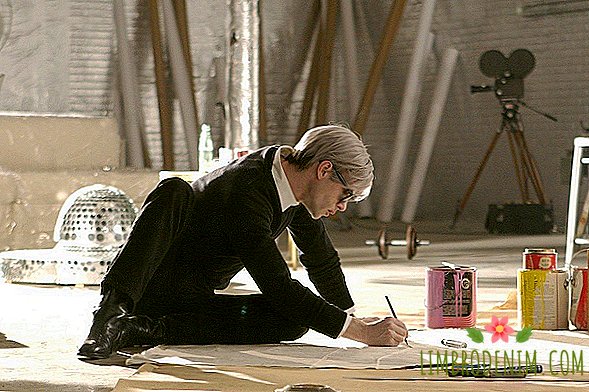
A new sense gave Andy Warhol glasses in the days of the birth of pop culture of the 60s. Warhol's dark glasses mean detachment, concealment of critical gaze and emotions, indifference to truth and lies, such a glamorous void. Well, you know, Warhol had a difficult relationship with pop culture and mainstream. On the one hand, he was part of it, on the other - he tried to preserve his marginality and bohemianism. Andy disclaimed responsibility for the final value of his work. He said: "Nothing is perfect - after all, absolutely nothing contradicts it." This is the indifference of the XXI century. I think his ideas were continued by Karl Lagerfeld and Anna Wintour, which today cannot be imagined without glasses. The same Wintour wears glasses to hide the reaction to the collections during the show. In 2000 Moschino used a suitable Wintour slogan in their advertisements: “You watch too much fashion. Protect your eyes”.
Death cliches and new steepness

Dark glasses have become a steady cliché of coolness. How long can they keep this status? After all, today, coolness appears where it is clear that the person intentionally did not try. There is a suspicion that this symbolic value of the points is gradually dissipating, although perhaps this is temporary - after all, the game of "coolness" and "uncool" goes on indefinitely. Another thing - corrective glasses for vision. There are studies of sociologists who indicate that in the eyes of society they increase the attractiveness of men and, on the contrary, reduce women's. This is because the attractiveness of men is stereotypically formed from the qualities that glasses emphasize, like reading, seriousness.
We live in an era of informational risks, protection from them, self-care, and public narcissism. You can deny some things, but you still do it by buying some things and showing them off. Take at least the ugly sports panoramic glasses from the 90s, which are back on the background of passion for street culture. Predicting trends is easy: think about what thing everyone has forgotten - she will be back soon.
In general, the fashion for glasses follows the general fashion trends. Example: now at the peak of the 70s - and we see the return of "aviators". Stamps are trying to level the cliché of coolness with new materials and experiments with frames. On the same MIDO, you can find manufacturers of glasses not only with wooden frames, but working with velvet or now popular gun; not least the role is played by high-tech materials and innovations. Now we are increasingly asking ourselves the question, what other useful functions we get by buying a thing? Sunglasses, both sunscreen and with corrective lenses, have been sorted out for a long time. For a long time they will be a landmark subject that can tell a lot about your view of the world and yourself: whether you want to look like a star, declare your social status or emphasize your attachment to a subculture.

